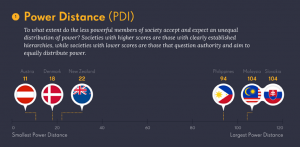Task: After the formal report proposal was approved, we were then tasked to create an outline for the report, provide a timeline of the research and report to be written, and provide survey questions to also be approved by Professor Erika Paterson.
MEMORANDUM
To: Dr. Erika Paterson, Instructor ENGL 301 Technical Writing UBC
From: Kelly Kim, Student ENGL 301 Technical Writing UBC
Date: February 28, 2022
Subject: 301 Formal Report Progress Report: Proposal to Enhance Visibility of Affordable Meals options for UBC students
Please find this as an update to my formal report proposal posted previously. Attached to this memo is a copy of survey questions to be asked to UBC students.
Purpose and Significance of Report
As there are limited avenues to find the menu options and is extremely difficult to find affordable options on campus, the purpose of the research is to find or develop a centralized board where price points and restaurants offering the menu are easily accessible.
Intended Audience
Mitchell Post – Student Services Manager at AMS of UBC Vancouver
Report Objectives
The purposes of this report are:
- To raise awareness on the concerns of students in finding affordable meal options on the UBC campus
- To provide cost-effective recommendations on how we can increase the visibility of affordable food options already on campus
- To find affordable means to distribute the collected information
Significance of Report
The report provides potential solutions to benefit the UBC students who have limited avenues to find affordable meal options on campus. It also provides an insight into the food affordability situation for students.
Methods
- Primary data collection via UBC students. Attached is the link to the survey questions being used to gather data:
https://forms.gle/GECqGrz5eBU5WS4g7 - Secondary sources will include article or blog post research conducted on the web.
Research Method:
In order to research ridership efficiency and provide effective recommendations, I plan to:
- Review concerns of food affordability on UBC campus
- Compile primary data source through surveying students to identify preferences of students.
- What is affordable for students?
- Investigate if there are current avenues students take to find affordable meals on campus
- Interview UBC students to inquire about current affordability of meals on campus.
- Data analysis of surveys and compare results with secondary research findings and resources
- Compile a report on potential recommendations to improve the student experience.
Scope of Research: The scope of the report is focused on international and domestic students at the University of British Columbia Vancouver Campus.
Writing Schedule:
The following is the schedule for the coming months:
- March 1: Formal report outline/progress report for a formal report
- March 7: Collect research and reports on primary data
- March 10: Compile initial report with data
- March 14-16: Formal report draft
- March 17- 19: Peer review formal report draft
- March 20 – 22: Peer review edits
- March 22-26: Post revised and final draft of the report
Thank you for taking the time to review the progress of my formal report. Kindly let me know if there are suggestions to better the survey questions or the research process if needed.
Survey Link: https://forms.gle/GECqGrz5eBU5WS4g7
Formal Research Proposal Link:https://blogs.ubc.ca/engl301-99c-2021wc/2022/02/15/email-memorandum-formal-report-proposal-2/
Formal Report Outline: https://blogs.ubc.ca/engl301-99c-2021wc/2022/02/28/assignment-23-formal-report-outline/


